To replace soil for potted plants removing the plant gently, tap off the excess soil and add new soil to the pot. Indoor potted plants should have their soil replaced every 2-3 years. Fruit trees such as blueberries, lemons and limes grown in pots will need their soil replaced every 3-5 years.
When to replace soil for potted plants
You should replace the soil for your potted plants when they are becoming too big for their pot, when they wilt 1-2 days after watering and if the leaves are turning yellow or brown.
Replace the soil when the plant is becoming too big for their pot

If you see that your plant is looking cramped and too big for the pot you can either refresh the potting soil and put it back into the original pot or move it to a pot 1 size larger than the one it is in. For many indoor plants such as Pothos, they will grow to the size of the pot and stop growing. That means that if you want a bigger plant then move them into a bigger pot with fresh soil.
If you would like the plant to stay the same size, then simply remove the plant from the pot and gently remove some of the potting soil from around the root ball. Re-fill the bottom of the pot with fresh potting soil and backfill the edges with more fresh potting soil.
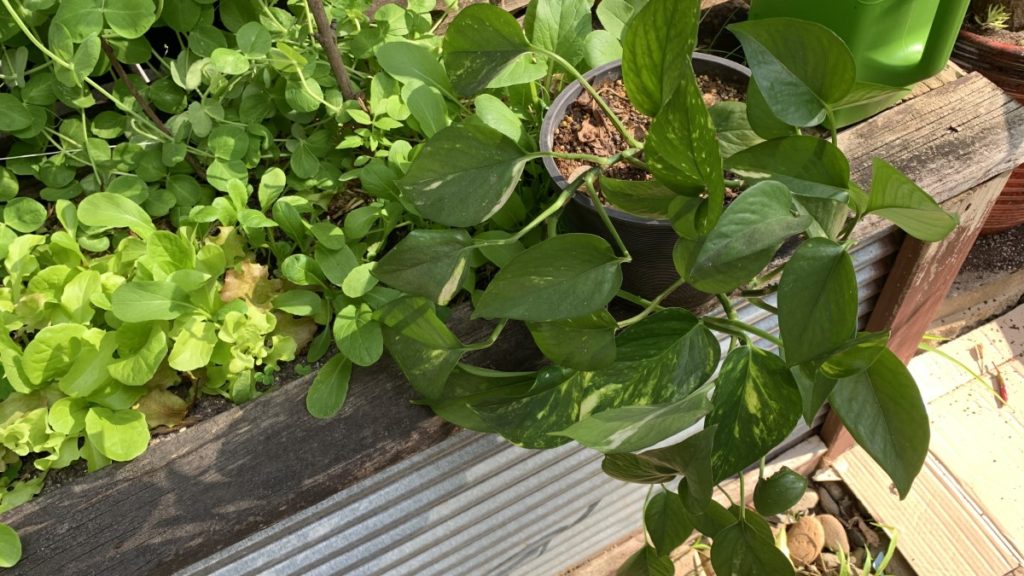
Choose a premium potting soil and an organic one if you like. I try to choose one with added slow release fertilizer and seaweed added. This helps my plants to have healthy roots and with give them a kick start to start growing in their new potting soil.
Water the plant well and allow the excess water to drain out. Planting indoor plants in plain pots that fit inside indoor pots mean that you can take them out to water and allow the water to drain out. They are also easy to move into a new pot if you want to change their look in your house.
Replace the soil if plants wilt 1-2 days after watering
If your plants are wilting or the leaves are drooping down very soon after you water them it is likely that the potting soil has become hydrophobic and you should replace it. This is where a coating will form over old potting soil and it won’t be able to absorb the water that you are giving your plant. The plants will also struggle to absorb nutrients from the soil and their growth will slow.
Use the same process as described above and remove some of the soil after removing the plant from the pot. Replace it with new soil and place it back in the pot. You can also move your plant up to the next size pot if you would like it to grow bigger.
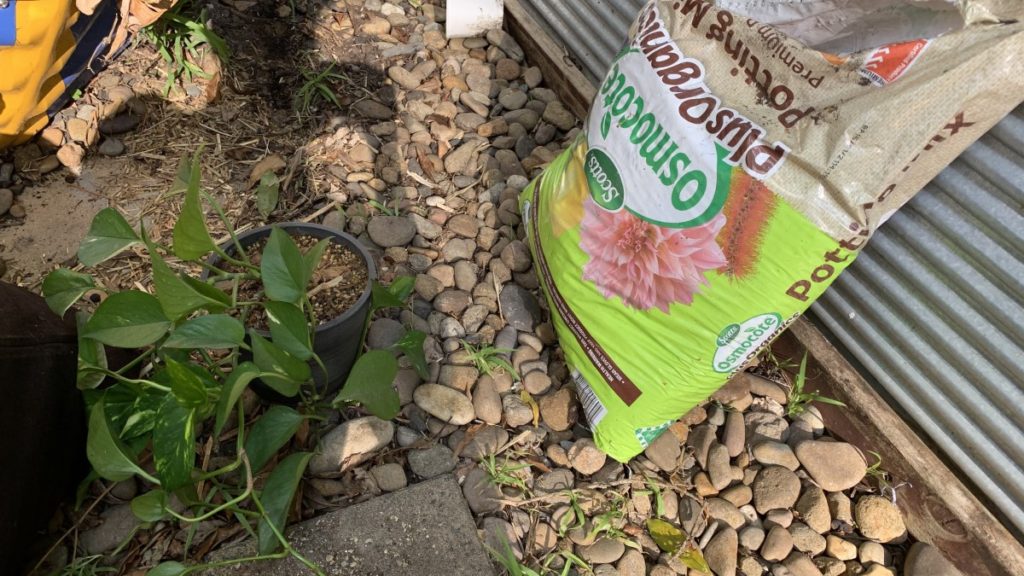
TIP: You don’t need to worry about removing all of the soil around the roots and it is actually best to love some there. Just gently shake the small amount of soil that is lose. You don’t want to damage the roots.
Replace the soil if the leaves have turned yellow or brown
If your plant has been in their pot for around 1 year and the leaves on your plant have started to turn yellow or brown it might be lacking nutrients. A great way to solve this is to replace the potting soil because a good soil will contain the extra nutrients your plant is looking for. That is why it is so important to choose a premium potting mix with added fertilizer.
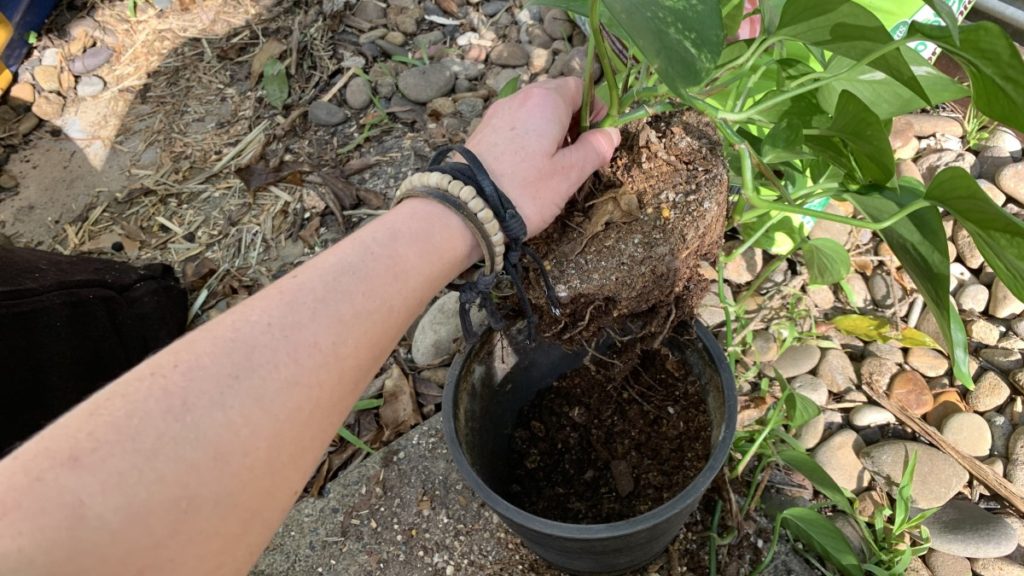
If you have a potting mix without fertilizer you can add your own and your plants will love it. I like to mix through pelleted chicken manure in my potting soil or in the soil I am planting into the ground. It is slow release and you can choose organic. It does smell though so mixing it through your potting soil will help to hide the smell. It will stop smelling after a day or 2 of watering your plant.
Replace the soil if your plant has a lack of new growth
If your plant stops growing new leaves then this is a good sign that you need to take it out of its pot and refresh the potting soil. No new growth can be a sign that the plant is not getting enough nutrients or water, both of which can be fixed with new potting soil.
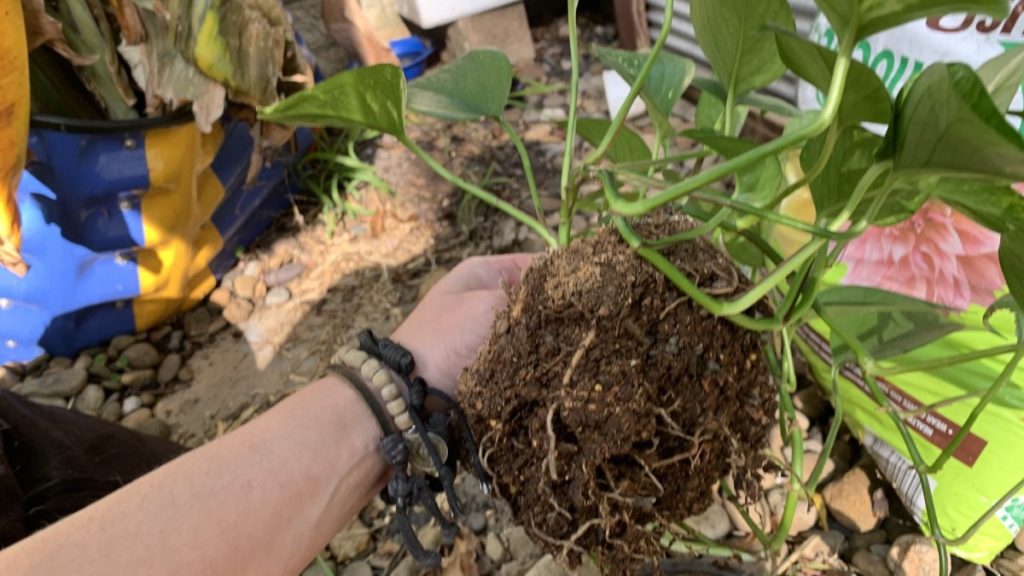
After you replace the potting soil, it may take a few weeks for your indoor plant to start growing new leaves again, but once the roots have settled in their place, it will start to shoot out new leaves again. Most plants love a potting soil refresh so try this if your indoor plant hasn’t sent out new leaves in a while.
How often to replace soil for potted plants
Replace soil for potted plants every 1-3 years. I had replaced the soil in my Pothos last year and it was ready for some new soil again this year. Not all plants will need their soil changed this often. Large fruit trees in outdoor pots will last up to 5 years in their pot if they are given regular fertilizer.
The trick to keeping a large tree happy in a pot outdoors, like a lemon tree is to mix in some river sand into the potting mix when you plant it. Add around ¼ coarse river sand to the potting soil when you plant your fruit tree in its large pot. This will add more structure to the soil and stop the soil level from dropping.
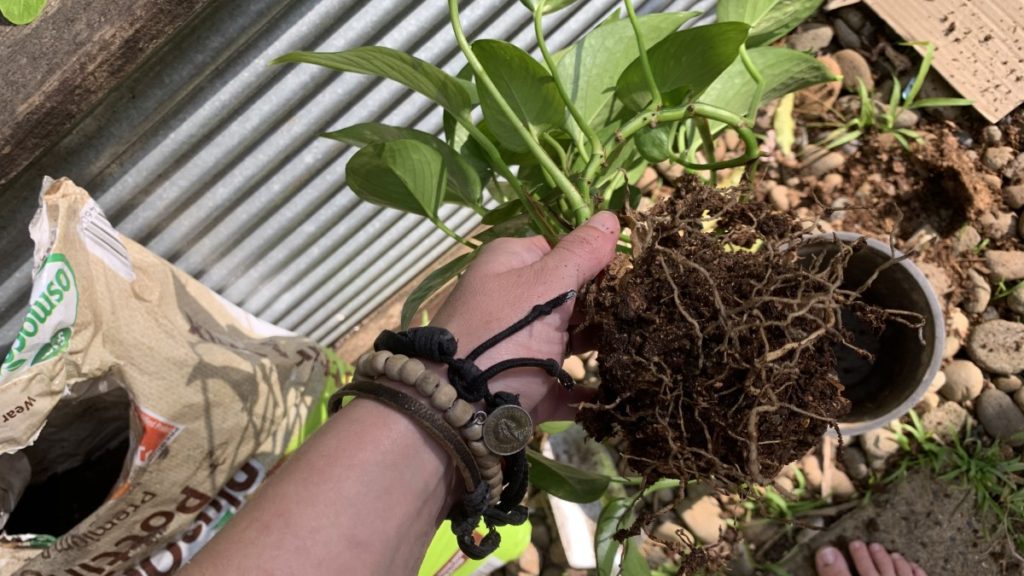
Normal potting soil has a high amount of organic matter which will break down over time. You will see the level of your soil drop a few inches from the original level over a 2-3 year period. This is a sign that the potting soil is starting to lose its integrity, the organic matter is breaking down and there are less air pockets in the soil for the plants to get oxygen.
Fruit trees can be carefully removed and replanted in the same or bigger pot. Replace the bottom layer of soil and be careful not to disturb the top roots too much as you shift it.
Tough indoor plants like Pothos and snake plant are tolerant of losing more potting soil from around their roots and you replacing it. Just give them a good watering in with worm juice or liquid seaweed to help them to settle into the new pot. This will help to move the potting soil into the gaps between the roots so that they can reach the nutrients.
How to replace soil for potted plants
To replace soil for potted plants there are easy steps to follow. I just repotted my Pothos and the first step was removing it from the pot. It needed a strong tap after tipping the pot upside down.
When my Pothos came out of the pot, it left a large amount of dry soil in the bottom of the pot. This was a good sign that it was ready for new soil to be added so it could keep growing. I gave the plant a soft tap on the side and soil dropped away from it easily.
You will not need to remove this much soil from most plants but if it falls of then that is fine. Pothos are a tough plant so will be happy with new soil.
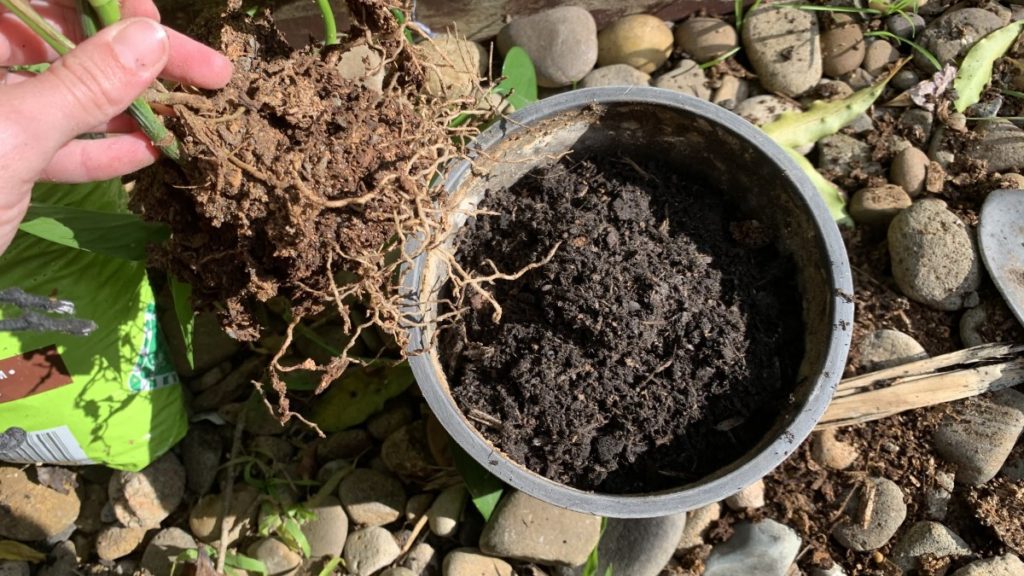
Fill the same pot with organic potting soil, make a small hole and add the plant back in. Add extra potting soil around the plant and press it down. Leave around ½ an inch gap at the top of the pot so that when you water it, the water won’t flow out everywhere.
I watered my Pothos in with worm juice from my worm farm but you can also add liquid seaweed to the watering can. Both worm juice and liquid seaweed act like a root tonic and help the plant to have strong root growth and recover from the move.
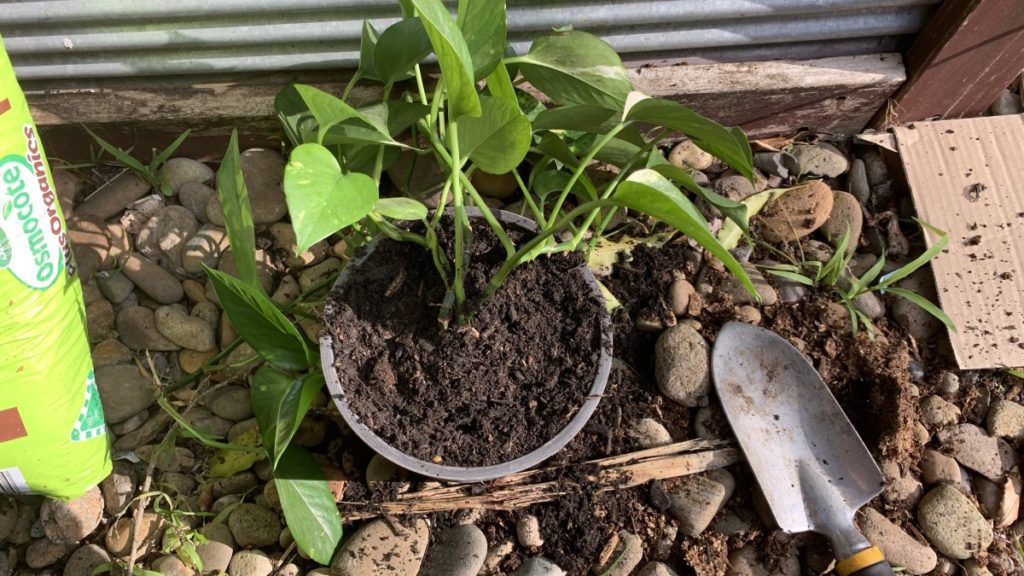
How to replace soil for potted fruit trees
Replacing soil for potted fruit trees will be easy for small pots. If you have a strawberry or blueberry planted in a pot these can be easily removed and the soil replaced. Larger fruit trees planted in half barrels will take more effort and may actually last for years in a large pot like this.
To replace soil for a fruit tree, tip the pot on its side and gently pull the tree out holding the trunk. The tree can be placed on the ground and then the potting soil can be moved away. Tip the pot back up, fill it with potting soil mixed with ¼ coarse river sand and add your fruit tree back in. Backfill with more potting mix and water in well.
You may need to enlist some muscle if you are dealing with a large tree. Think carefully about whether this is a job you can take on yourself or if you need a group of people to help out. Fruit trees can be heavy so take care.
For a large fruit tree planted in a pot, it will benefit from trying to give it extra fertilizer before you try to replace the potting soil. If leaves are turning yellow or you are lacking new growth, try a monthly liquid fertilizer like fish emulsion or an organic liquid fertilizer first.
Moving a large tree out of a big pot and replacing the soil is a big task so try to fertilize first. Even if this doesn’t work, you plant will be healthier and ready to move when you decide to do it.
Do you need to replace potting soil every year?
You don’t need to replace potting soil for your plants every year but you should look out for signs that they are struggling. When I planted my Pothos in its new pot a year ago, I used a poor quality potting soil with very large particles. It was left over in a garden shed from the house we were renting and may have been made for succulents. This meant I needed to replace the soil after 1 year as it had quickly dried out and the plant wasn’t growing as quickly as it could.
Now that I have it planted out in good quality potting soil, I should only need to replace the soil after 2 years. I will keep this Pothos in the same sized pot and allow it to get as big as it can grow with this amount of soil.
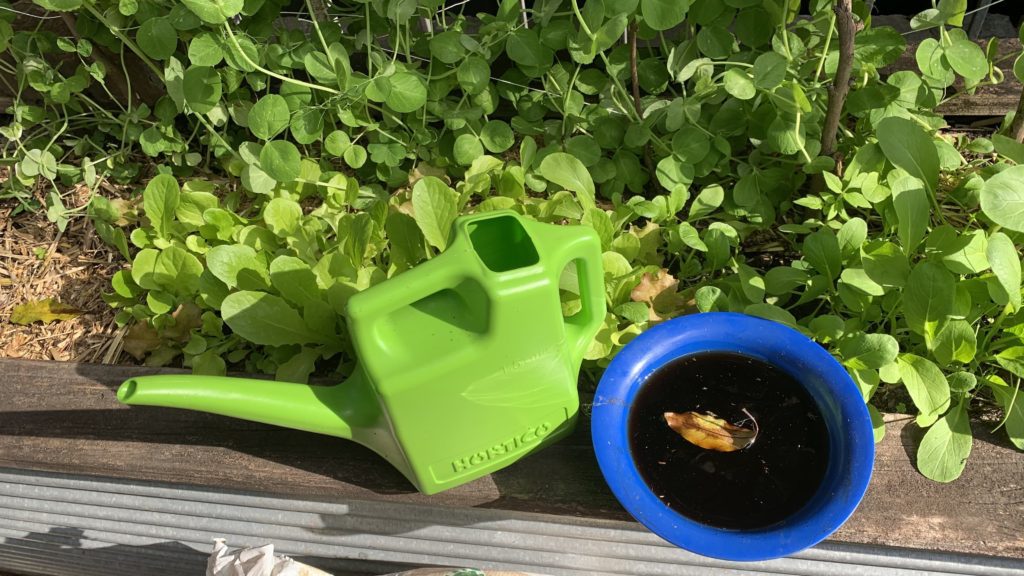
Pothos can grow to very large plants if you let them and can trail along windowsills, benches and drape down book cases like mine. I use this plant to take cuttings so that I have lots of smaller plants scattered throughout my house. I have found that they have very shallow root systems so actually survive well in smaller pots, as long as the potting soil is good quality.
How to choose potting soil for potted plants
Choose a potting soil that is matched to the type of plant you are re-potting. There are a range of potting soils now available made for plants such as succulents, Azealia’s, natives and vegetables.
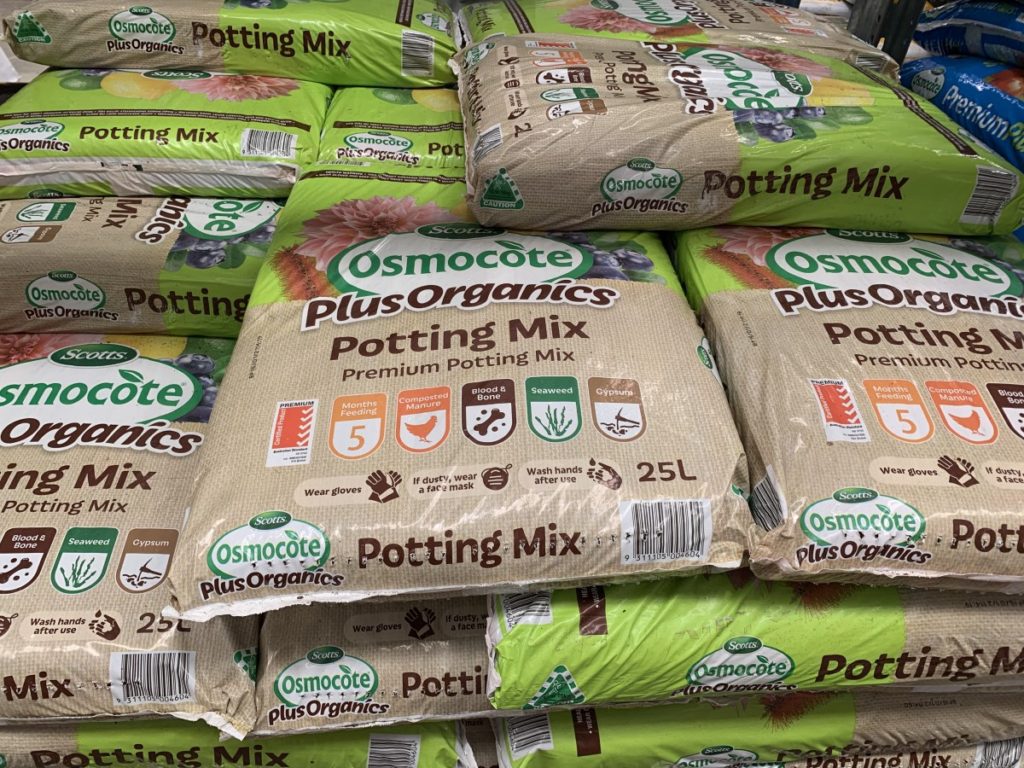
There is also a general premium potting soil available that will suit most plants. If you are buying new potting soil, you should choose one that is specially crafted for your plant.
If you are replacing the soil for a blueberry plant you can use an Azealia and Camelia mix as this has the same acidic properties that blueberries like. The formula isn’t always as straight forward as matching the soil to the exact name as your plant but sometimes it is.
When you are choosing a potting soil, look for a premium label. Premium potting soil has extra nutrients added to support plant growth in the long term. You can choose an organic potting soil which will include organic fertilizers like fish emulsion and seaweed extracts.
Non-organic premium potting soils will usually contain a synthetic fertilizer which will slowly release over 3-6 months. After this time, you will need to add your own fertilizer to your potted plants.
Why potting soil needs to be replaced
Potting soil needs to be replaced in potted plants because it contains lots of organic matter which will break down over time. The level of the soil in your pots will drop, the soil will become more compact and your plants won’t get enough nutrients and water.
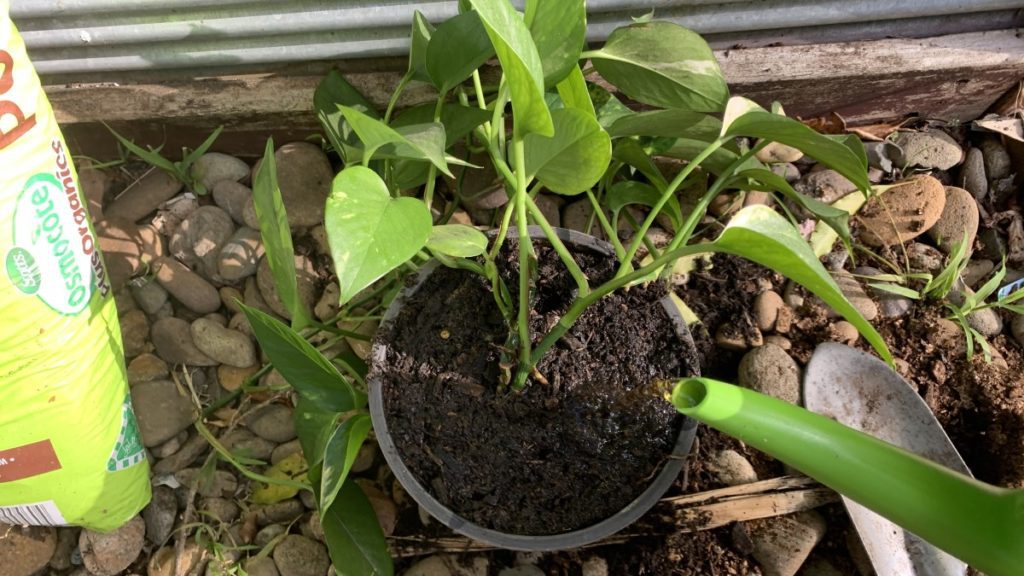
When the organic matter in the potting soil slowly breaks down, you will notice the level of the soil drop in your pot. Although the drop in soil level itself isn’t really a problem, it means that the organic matter is breaking down and the soil is becoming more compact.
There will be less air pockets in the soil and the plants will struggle to absorb nutrients and the microbes in the soil will not have any oxygen. The soil could become anaerobic (without oxygen) and wont’ be healthy for the plant.
The soil can also become hydrophobic so when you water the plant the water won’t go into the soil. Instead it will run straight past the roots and out of the pot. This can create another problem as the plant roots can sit in the extra water that has drained out the bottom of the pot for a long time which can cause root rot.
Replacing the potting soil for your plant is an easy and fun task, especially for indoor plants. Your plant will get a new lease on life over the next few weeks and you will be glad you took the time to do this job in your indoor or outdoor garden.
Replacing the soil in raised garden beds
Replace the soil in raised garden beds to can be one way to add more nutrients to your vegetable garden. There is another option that will improve raised garden beds without replacing the soil. Work through new organic matter in the form of compost, worm castings, composted cow manure and pelleted chicken manure.
If you mix through up to 50% new compost and a few handfuls of worm castings, your raised vegetable or flower garden beds will get the extra boost of nutrients without replacing the soil completely.
Scooping out the top few inches of garden soil in your raised garden beds and replacing it might seem like a good idea but it isn’t necessary to improve the soil for your plants. It is best to improve the soil by adding organic matter rather than replacing the soil completely.
Soil in raised garden beds can be continually improved by adding more organic matter, liquid organic fertilizer and planting cover crops like mustard. Cover your soil with a thick layer of mulch or cover crops to protect and improve it. If you use sugar cane mulch, you can let this break down over a number of months and simply work it into your garden at the end of the season.
When I moved into our townhouse there were 2 raised vegetable garden beds which had very old soil in them. They were planted out with some struggling aloe vera and looked like they hadn’t been planted in for years.
All I did was add some compost, worm castings, a bit of potting mix I had left over and started planting my vegetables in them. So far I have grown lettuce, pak choy, snow peas, strawberries, broccoli and spring onion with great success.
Keep building on your soil and over time it will improve, even in raised garden beds. My ultimate goal is to attract worms into my raised garden beds naturally by improving the soil with organic matter.
Should soil ever be replaced in garden beds?
I haven’t ever found a reason to completely replace soil in garden beds but instead, gradually and slowly improve it overtime. The best trick I have for this is to add a covering of mixed leaf and bark mulch. This tree mulch has green and brown materials and will support the growth of a healthy microbiome in your soil.
The microbes will multiply as they break down the organic matter in the mulch and make it available in the soil. Ground worms will also grow in numbers as they come to eat the microbes and the organic matter. Creating good soil in garden beds can be achieved quickly by adding organic matter such as compost.
If you have old soil left over from then this can be added back to your garden beds. Old potting soil can be added to your compost and left to improve by mixing it through with food scraps, hay, straw or fall leaves. Leave it to break down for 6 months and you will have a rich soil ready to add back to your garden.
No soil should go to waste so think of ways to improve it instead of sending it into landfill. The old potting soil that I removed from my Pothos went straight into my compost bag with some fall leaves to break down over winter ready for spring planting.
Happy Gardening.
Check out this article for more on potting soil.
I am an accredited practicing dietitian, experienced gardener and a dedicated cook. I love writing and sharing my experience so you can learn from my successes and mistakes.

Comments are closed.